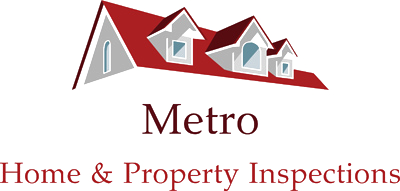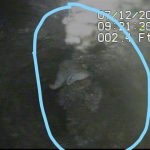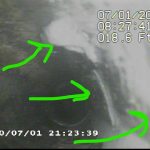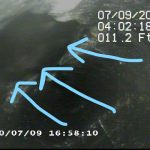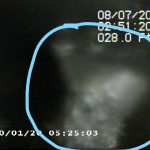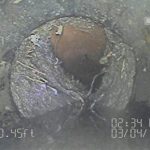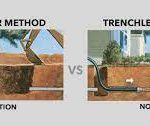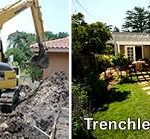
Visual Inspections using the latest technology
Sewers and Drains will deteriorate over the years, and this will lead to problems ranging from ground movement to misaligned drains and cracking. One of the ways to effectively identify the cause of problems with drains and sewers is to carry out a visual inspection. Using the latest CCTV equipment available, Metro Home and Property Inspections is able to efficiently carry out pipeline inspections and identify sewer and drain defects in New York, and the surrounding areas along with our sister company picture-perfect for areas of New Jersey.
Save yourself from a expensive headache
Few first time Homebuyers consider sewer inspections before buying homes. They know they should get a Home Inspection, but sewer lines are almost an afterthought. Yet this is one of the most important inspections a buyer of homes should conduct because it can turn up numerous problems that can be seriously expensive to fix. The time to find out if a sewer is faulty or needs replacement is before you buy, not after the fact. As a potential Home Buyer, you will probably rely on a Home inspection Service. The service will evaluate the internal and external features and condition of your home. The plumbing System is included on the Home Inspector's list of things they need to check but how will you know if your new home's sewer system is functioning properly. Sewer Scope inspections are out of the scope of a standard Home Inspection. For your home's sewer system to be fully evaluated, the inspector will need to have experience in plumbing and would also need an HD color inspection camera, and know how to use it. It is highly advisable to always have a sewer line inspection done before your purchase. Mainline sewer work can range in cost to from approximately $5,000.00 to $25,000.00. Along with the costly sewer repairs, additional damages and costs can occur because sewer system blockages can damage your home heating system, sheetrock, flooring, personal items, etc. After you buy a home, you will not typically be in a position to incur such an unexpected expense. Paying a few hundred dollars or so for a Sewer inspection is a small price to pay if you avoid a sewer repair costing thousands of dollars.Now Offering HVAC repair and Water heater installations
New Homes Benefit from a Sewer & Drain inspection
Several Possible Causes for Sewer Line Blockage
Roots: Tree roots are the biggest offender for blocking sewer lines. That’s because sewer lines are the perfect environment for tree roots, which love the constant source of water in pipes and the nutrients sewage provides. Tree roots have immense invasive power and will find the smallest crack or create a crack in a line to force their way through. Tree roots grow quickly, and can soon block a line. Root problems are easy to spot during video inspections.
Settling: Sewer lines placed in improperly compacted or supported trenches sink and create low spots called Bellies. This created a stagnant settling point and causes slow sludge build-up until blocks happen. Unfortunately, bellies often occur, and the only fix is expensive. Bellied sewer lines must be excavated and repositioned. Thankfully, bellies are simple to identify through inspection.
Ground Shifting: Even the best-laid sewer lines can go out of slope or detach ver time. Ground settling happens for many reasons: Groundwater table changes, nearby excavations or even seismic events. Pipes blocked by ground shifting usually require expensive digs and repairs. A sewer line inspection will reveal shifting ground conditions.
Inferior Pipe Materials: Many older homes were sewer-connected by clay or concrete tiles. These are segmented lengths of brittle pipe material that crack over time from root invasion or changing ground conditions. Newer homes now use durable, plastic sewer pipes. A video inspection will quickly identify inferior pipe materials and raise a red flag for future problems.
Poor Installation: Like any project humans do, sewer line installation is subject to bad construction techniques.the most common installation problems are improper joints with severe angles and poorly fitted connections. Camera inspections are guaranteed to spot poor workmanship and give a warning for looking problems. Man new home builders will use an old sewer hookup that was there instead of running an entirely new line.
Key Tips for Identifying & Troubleshooting Sewer Line Problems
Homeowners do not pay attention to sewer line problems but they will make themselves known through extensive damage to your home if left untreated. There are symptoms such as clogs, backups, and other sewer problem warning signs that can alert homeowners to hidden damages before things get out of hand. Things to look for when you think there may be a sewer issue in your home. If you identify these issues call us right away to schedule a video inspection. Calling monthly to have the sewer unclogged is a waste of money. If this happens, apparently there is some type of underlying issue in the sewer pipe.
Top 10 Symptoms of Sewer Line Problems:
Benefits of Broken or Damaged Pipe Detection:
If you have a broken or damaged sewer line, it can be very costly and messy to repair. With our reasonably price serviced technology, we are able to locate the exact spot of the damage or break on the outside from above the ground. We then mark the exact spot of the damaged section of sewer pipe, and when the plumbers or whoever come to make the necessary repair, they only have to dig up that small area instead of the entire front yard, driveway or back yard. This saves the homeowner thousands of dollars, time and mess.
Below is as an example of the a recent job we did and explains the savings:
We had a client that called us because they claimed they had a broken sewer line somewhere in the front of their home. They had an estimate from a Plumber for $9,500.00 for the repair. Their cost to us was $250.00, $80.00 for someone to dig up the spot and put dirt back where we located the leak and $450.00 to a plumber to fix the pipe. Total cost was $780.00. They were able to save $8,720.00 using our technology.
Fix Any Problems with our Sewer Repairs
An expanding device called an expander head, which may be either pneumatic or hydraulic is introduced into the defective pipeline through a launching pit. As it travels through the pipeline toward the receiving pit it breaks the pipe into many small pieces, pushing the pieces into the surrounding soil. New pipe is attached to the back of the expander head and is pulled simultaneously with the expander head until it reached the receiving pit. Both ends of the new pipe are connected to their respective existing pipe to close the system and service is restored.
A Hydraulic puller is set into a receiving pit at one end of the existing pipe to be replaced. A heavy cable is attached to an expander head on the other end of the line to be replaced. The cable is then fed through the existing pipe and attached to the hydraulic puller. The hydraulic puller then pulls the expander head with the new pipe attached to it through the existing line, introducing the new line simultaneously.
Advantages: Pipes of all types and sizes follow paths through buildings, under driveways, sidewalks, trees, bushes, lawns, road surfaces and many other costly improvements. Since the bursting method is performed underground and through the existing line to be replaced, costly surface improvements are left undisturbed. Conditions such as offset joints, collapse, cracks, separations and roots are eliminated. The newly installed seamless pipe is impervious to roots and eliminates fluid migration between pipe the environment. Its smooth inner surface reduces the effects of friction which enhances pipe performance. Lateral repairs are typically performed in one day, while large mains take longer. Since pipe introduced using the Bursting method travels along the existing pipe alignment, if the existing pipe has a sag/belly, the new line will mirror the existing condition. The bursting techniques can be used in conjunction with a piercing tool to run a new line underground.
Our Trenchless Brush Coating System
The Brush Coating System can be used to renovate old or deteriorated drains and sewers, renovate entire piping systems (for example – apartments or blocks of flats), Repair underground pool lines, used in apartments and high-rise buildings, and can be used to repair leaks behind walls instead of tearing down walls.
The Brush coating system can also be used for CIPP/Stacks and to coat laterals, coat entire piping systems from rooftop to city sewer, used as a coating barrier to prevent rust and corrosion, strengthen CIPP lined connections, and fill gaps between CIPP Liners.
The system comprises of a two part 100% solids epoxy resin (Dual Coat1000E) that is applied to the inside wall of deteriorated and/or damaged pipes. The resin is transported into the pipe using a pump and then applied to the pipe wall with a different machine that powers the brushes to coat the inside of the pipe. Several layers are applied and at the completion, the wall thickness applied is approximately 7mm (9/32″). Best of all, the manufacturer of the product offers a 10 year warranty and Metro Sewer Service adds an additional 10 year warranty. All other sewer companies offer 1 year warranties
